The HK 416 platform is already part of pop culture and its implantation has been highly successful worldwide. But, 20...
Two Decades Of HK 416 - On A Legendary Weapon
The status of that Heckler & Koch video where Robert Hirt appears shooting in a pool with a steel mask and comparing a Colt M4 to an HK 416 is already legendary. At the end of the test, while German electronic music sounds on the background, Hirt basically proclaims the victory of German steel over American. Of course this was in 2008, and since then much has changed in the small arms world.
This article must not be interpreted as criticism towards a weapon, but rather as a portrait of the good and the bad. The HK 416 is a weapon of unarguable quality and reliability. Its adoption has been global, in countless armed and law enforcement organisations of the world, and particularly many special operations forces. It’s the standard issue weapon of the US Marine Corps, GROM (Polish army SOF), the Norwegian and French armed forces, and its implantation in the Spanish Marines is already a fact. The Tier-1 units of the US have used it to some degree or another, as well as countless other police and militaries.
The resilience of HK steels and methods of manufacture is well established, and the feats of extreme reliability of the German workhorse (thousands of shots in record time without losing accuracy) are as well known as impressive. After all, Germans have been hammering steel –first swords, then bayonets, barrels and cannons– at the shores of the Neckar river for centuries. They must have learned a thing or two!
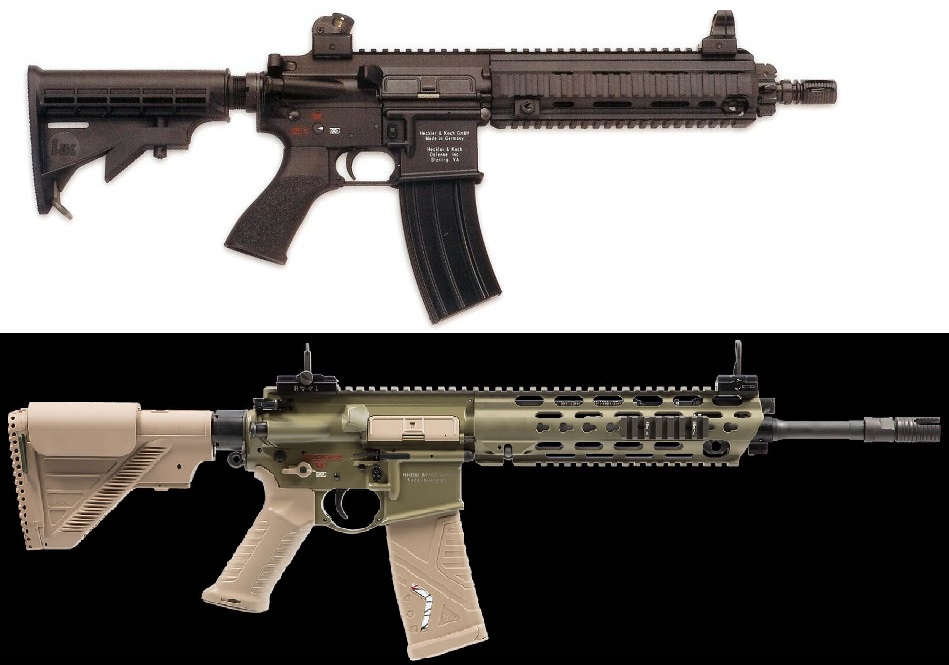
Generation 1 (up) and 8 (bottom).
So this is the situational picture of the HK 416 at present, but in the past, the creation of this weapon was totally linked to the Special Missions Unit of the US Army: Delta Force, CAG, SFOD-D, ACE or however it might be called.
For short range applications, “Delta” had been using short carbines (CAR-15 or Colt Commando versions) derived from the M16 since the unit was created in 1977. The reliability of these carbines was never equivalent to the M16 due to the fact that the gas system length and the size and dwell time (how long the gas port remains pressurised) of the gas port resulted in very high pressures and temperatures, as well as an extremely violent and dirty action, which subjected certain components of the weapon to a brutal wear pattern, extraction failures being for example relatively common.
Another problem with these weapons was suppressed use, as this increased the pressures in an already overpressured system. The M4 upgrade package (which affected the extractor and other components) partially solved this, but a definitive solution was not yet in sight.
Another limitation of the AR-15 platform seemed to be its amphibious or over the beach (OTB) usage. After submersion, the weapon had to be drained adequately (for example removing the magazine and opening the breech) before opening fire, otherwise there was risk of hydraulic lock of the action –or a dangerous overpressure.
In the 90s, the M4 (or similar derivatives such as the Colt Model 723) was being used by special units (Delta, SEAL, Rangers, SOCOM) out of it’s original application intent, which was to be a convenient primary weapon for troops in support roles (armoured and others). But the American SOF community was pushing the por carbine into extremes which were not intended, and where its limitations became evident –for example automatic fire as support weapon, amphibious use, suppressed use, shortened barrels.
In the second half of the 90’s, probably as a result of lessons learned in the Battle of Mogadishu, Delta was using similar carbines for tactical roles akin to CQB, which until then had been the prerogative of the MP5, and the 14.5 inches of the American carbine were beginning to get uncomfortable.
Naturally, the MP5 had more adequate dimensions for application in short distance and confined spaces, but at the same time it was bogged by the inherent limitations of its cartridge. Even using high pressure 9 mm rounds, the MP5 could not think of even closely matching the performance of a rifle platform.
All mentioned attempts to achieve shorter versions of the AR-15 (archaic ancestors to the MK.18 carbine, with barrels close to 10 inches) resulted unsatisfactory pertaining reliability, or worked optimally only with certain types of ammunition and in certain environmental conditions.
Larry A. Vickers, Delta NCO and at that moment responsible for the development and acquisition of weaponry of his unit, visited Heckler & Koch’s headquarters in Oberndorf, Germany, the Mecca of German small arms since before the times of Mauser. There, he collaborated with the CEO of the company, Ernst Mauch, to solve the challenge posed by his unit.
Both the HK G36C and the SIG SG 552 popped up as possible substitutes for the Colt Carbines and MP5, but they never made it due to their ergonomics and their awkward and slow manipulations. Beyond their mechanical reliability, manipulation speed was very important for the American operators, and the timer didn’t lie. This fact was a tacit acknowledgement of the inherent ergonomic superiority of the AR-15 platform, and that the future weapon to be developed must have the same ergonomics and manual of arms as the American classic.

The two firearms considered to replace the M4 and MP5 in CQB-type roles, the SIG SG-552 Commando (up) and the HK G36C (bottom). We suppose they were rejected due to ergonomics (controls, trigger quality) which affected manipulation time and the speed and precision of the shooter.
Delta sent a bunch of carbines to Heckler & Koch so that they could receive the famous magic of Teutonic engineering, and when HK send the guns back to the unit, their performance was exceptional. Posterior developments totally changed the gas system and the rail interface for mounting accessories.
Parallelly, the Germans made a great propagandistic labour against the Colt M4, short of inventing reliability problems where there weren’t any and pointing at the fact that, in direct impingement systems, dirty gasses and “carbon” are blown straight into the action of the weapon. In reality, this is not very important –carbon being essentially a dry lubricant– but H&K’s success rested on their ability to generate the idea that the M4 was an unreliable and inherently faulty design, and to plant in the mind of the American soldier the seed of doubt: that something was intrinsically wrong in the functioning of his weapon.
In 2001, development of the firearm was finalising, and in 2003 the first prototypes where tested in Yuma, Arizona. In 2004, HK presented its first short-stroke piston AR-15, designated HK M4. It was basically an M4… with the tried & tested gas system of the HK G36. Colt Defense sued HK for the name similarity. Although this was a military designation and thus not patentable, HK cautiously opted to change the name to HK 416.
The first HK M4 had no ejection port cover, as according to HK, this was not necessary. However, a conventional dust cover was finally installed, an actually very useful implement to protect the internals of the weapon from mud and other friction contaminants when the weapon isn’t been fired.
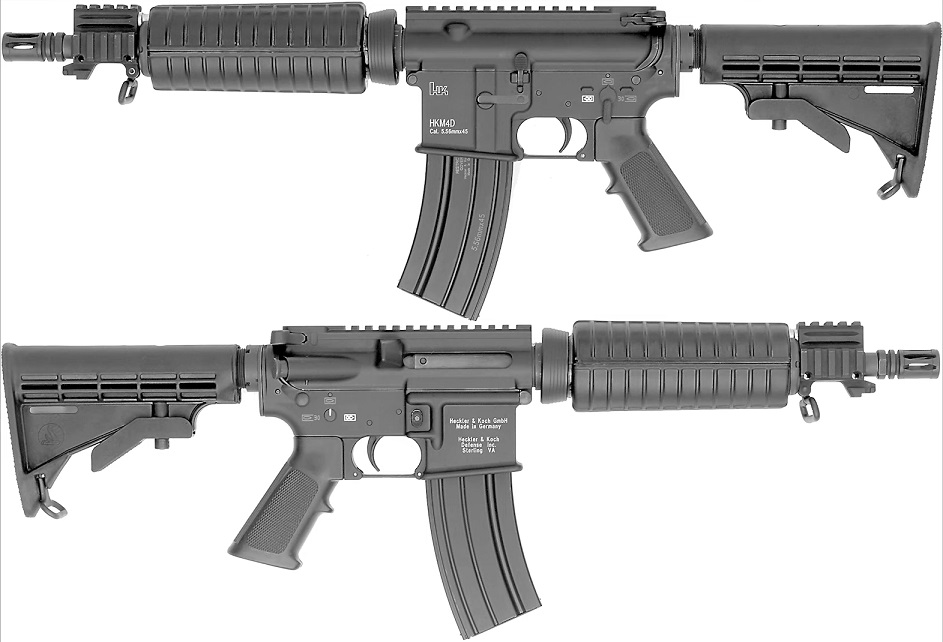
The first prototype presented by HK was denominated HKM4. Note the M4-esque handguard and the absence of an ejection port dust cover, which according to HK was not necessary.
Between 2004 and 2005, the first HK 416 began to reach Delta, their first direct actions taking place in Iraq at the beginning of 2005. The German gun’s legend was rapidly cemented in the culture of Western soldiers as a specialised tool for elite warriors, and its reliability confirmed it.
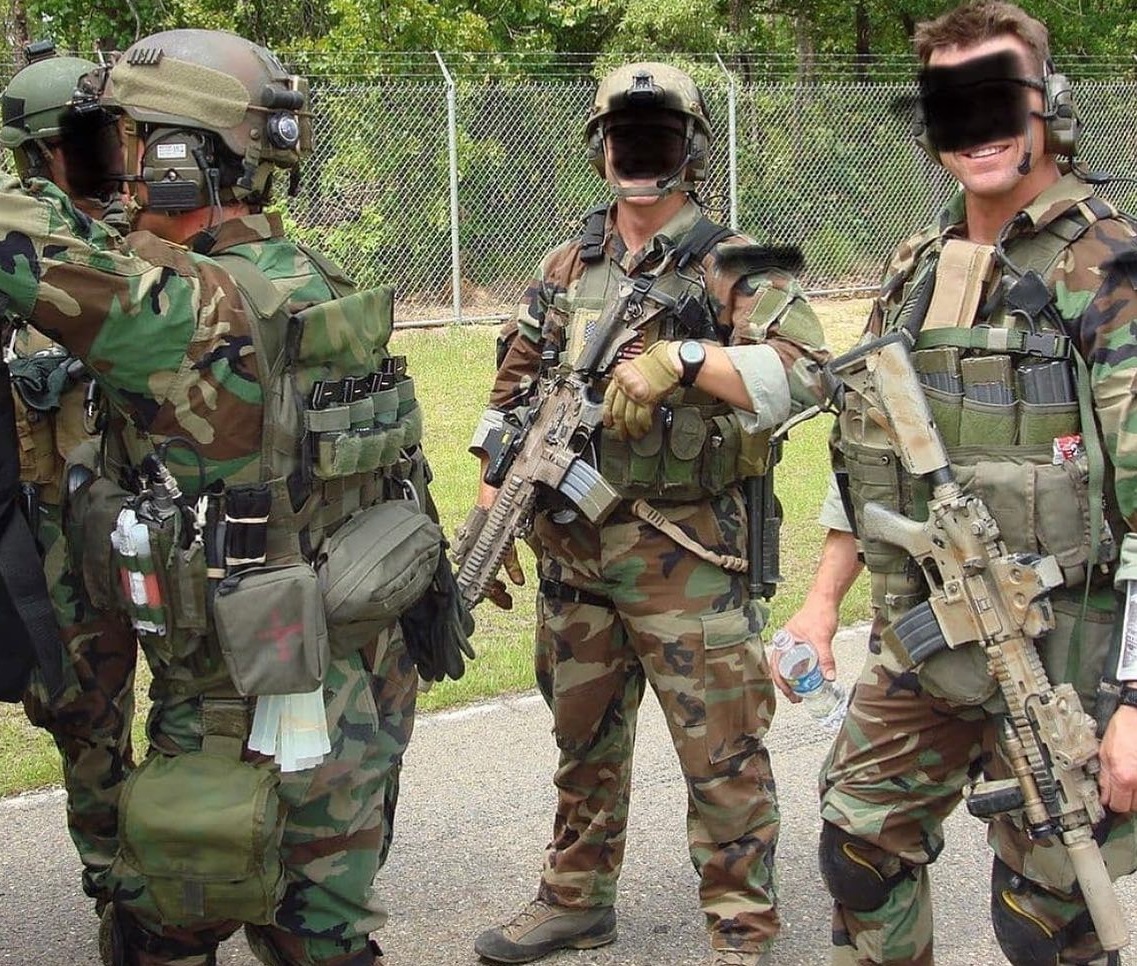
This image is probably from 2005 and corresponds to the first HK 416 issued to Delta.
In 2011, an HK 416D, wielded by a DEVGRU operator (special missions unit of the US Navy) was allegedly the weapon that killed Bin Laden.
SOME FEATURES OF THE HK 416 FAMILY AND COMPARISON WITH AR-15
The HK 416 is an AR-15 modified to accept the short stroke gas piston system of the G36 rifle. The design, far from being modern technology, hails from the Gewehr 43 German semiautomatic rifle, itself based on the semiautomatic Tokarev SVT-40.
The piston system increases weight, reciprocating mass and the amount of moving parts, because in a regular AR-15, the bolt head is simultaneously the gas piston, while in the HK 416, a piston, an operating rod and a spring are added to the bolt.
Moreover, the HK 416 is overgassed (later generations have an adjustable gas key). This means the gas port is larger than usual, with the idea that the brutally high pressures would favour a stronger action, capable of cycling reliably through all kind of friction contaminants and environmental conditions.
This is the official explanation, but an alternative one comes to complete it: in traditional AR-15 weapons, the gasses push the bolt along its central axis, in such a way that the bolt carrier group moves longitudinally in a more or less perfectly linear and concentric fashion, with minimal friction with the guide rails and surfaces of the upper. In the HK 416, the piston strikes the bolt carrier out of axis, inducing a certain lever or offset effect where the forward part of the bolt carrier group tends to rise and the rear part tends to lower itself. This unwanted offset effect can cause great friction when interfacing with the internal surfaces of the upper, therefore stoppages. To partially remedy this, HK added anti tilt pads to the rear of the bolt carrier –again increasing mass and volume.

In a direct impingement AR-15 (up), the barrel axis is coincident with the bolt push axis, the bolt reciprocating axis and the buffer axis, and linearly conveys the movement into the shoulder of the shooter, with minimal reelevation. In an HK 416 (bottom), the piston push axis on the bolt carrier group is offset and induces reelevation and a host of other secondary effects.
Therefore, opening the gas port to the max was actually the answer of HK to the problem created by excessive friction of the bolt carrier group when moving back and the increase in the mass of the bolt carrier. The price to pay was a vicious recoil (for a 5.56 mm weapon) and reelevation, both due to the reciprocating mass and to the fact that the push axis of the piston is above the line formed by the bolt, the buffer and the shoulder of the shooter.
We will go over more differences with the original AR-15 Stoner design, but we will see once and again that most particularities of the HK 416 stem from these two features: external piston system + overgassed.
The external piston required raising the top of the upper receiver, which again results in the HK 416 being heavier, larger and with an exclusive upper and handguard. The Picatinny rail of an HK 416 is .38 inches higher than a normal AR-15, which must be computed into the choice of optic mount height and ideal zeroing distance.
All in all, the brutal pressurisation of the gas system brought about a whole cascade of unwanted side effects which had to be counter balanced with more engineering, more weight, more moving parts and more complexity. The original AR-15 equation devised by Eugene Stoner was at this point unrecognisable.
• Increase of the velocity of the bolt carrier group in the action, this subjects all components thereof, and particularly the extractor, to much more brutal forces than a direct impingement AR-15.
• The buffer spring is much harder in order to keep the balance of the equation of the HK 416. This is particularly noticeable when racking the charging handle, for example when locking the bolt back. It also implies that a regular AR-15 lower is not necessarily compatible with an HK 416 upper.
• Increase of the automatic fire rate. AR-15 weapons have an ideal rate of 780-850 rounds per minute. HK 416s are well above 900 rpm, and with time and gas port erosion, this rapidly escalates to above 1000, which is insane, especially in this type of weapon.
• During testing it was found that, due to the great speed of the bolt carrier group, it was common for the bolt to ‘bounce’ back when locking, something that affected the reliability of the weapon (for example light primer strikes, but also something as dangerous as slam-fires). To remedy this, tungsten powder was added to the buffer weight, so that inertia would favour a more stable action when the bolt carrier group is in its two extreme positions (dead-blow effect). In a normal AR-15, tungsten powder might be desirable to improve the subjective feeling of recoil, but is in no way indispensable for the mechanical reliability of the weapon.
• The mentioned tendency to slam-fires, due to the strength of the buffer spring, meant that, due to great inertia, the firing pin (which in the AR-15 platform is floating –unsupported) would move forward and strike a primer, causing an unintended discharge, without the shooter squeezing the trigger and without all the components of the fire control group being correctly aligned. To remedy this, an antagonist spring was added in front of the striker, as well as a sophisticated firing pin safety system, not very different in concept than those found in Glock pistols. This safety, unfortunately necessary, adds another layer of complexity and moving parts to an already complex and heavy platform, and it is only compatible with extended height AR-15 hammers, capable of reaching the safety to deactivate it.
• Especially in the first generations, the magazine well is wider than a milspec AR-15, and it is also longer in order to be compatible with a blank fire magazine designed by HK, which in turn had to be compatible with the HK-upgraded SA80 of the British armed forces. This magwell works with regular Stanag magazines, but not with the first generation of Magpul PMAGs, the anti-overinsertion geometry of which was designed for milspec magwells. This is the reason Magpul made the EMAGs, compatible with the SA80 and the first gens of HK 416. Subsequent generations of Magpul PMAGs work on all HK 416 models.
• The buffer retainer pin has an angular interface with the buffer weight. This is a better design than the milspec one and in this case it’s also necessary, because upon separating upper from lower, the pin is the only thing holding the buffer in place, the HK 416 buffer spring being much stronger than regular AR-15.
• Inside the fire control area of the lower there is a geometry which prevents the tail of the hammer from contacting the tail of the disconnector. This is another good idea and one of the objective upgrades of the HK 416.
• The firing pin retaining pin is captive, i.e. can’t be manually removed, just disengaged. This is another objective upgrade that prevents the loss of this important component.

• The piston is exactly the same one than the G36 and is totally exchangeable with it. The operating rod is modified and is more robust, as well as the spring.
• The piston system puffs very hot gasses towards the target, which is easily detectable with thermal vision devices that are now commonplace in high risk theatres. In milspec AR-15, venting of gas takes place at the ejection port, perpendicular to the shooter, and the gasses are cooler and less pressurised when they contact the atmosphere.
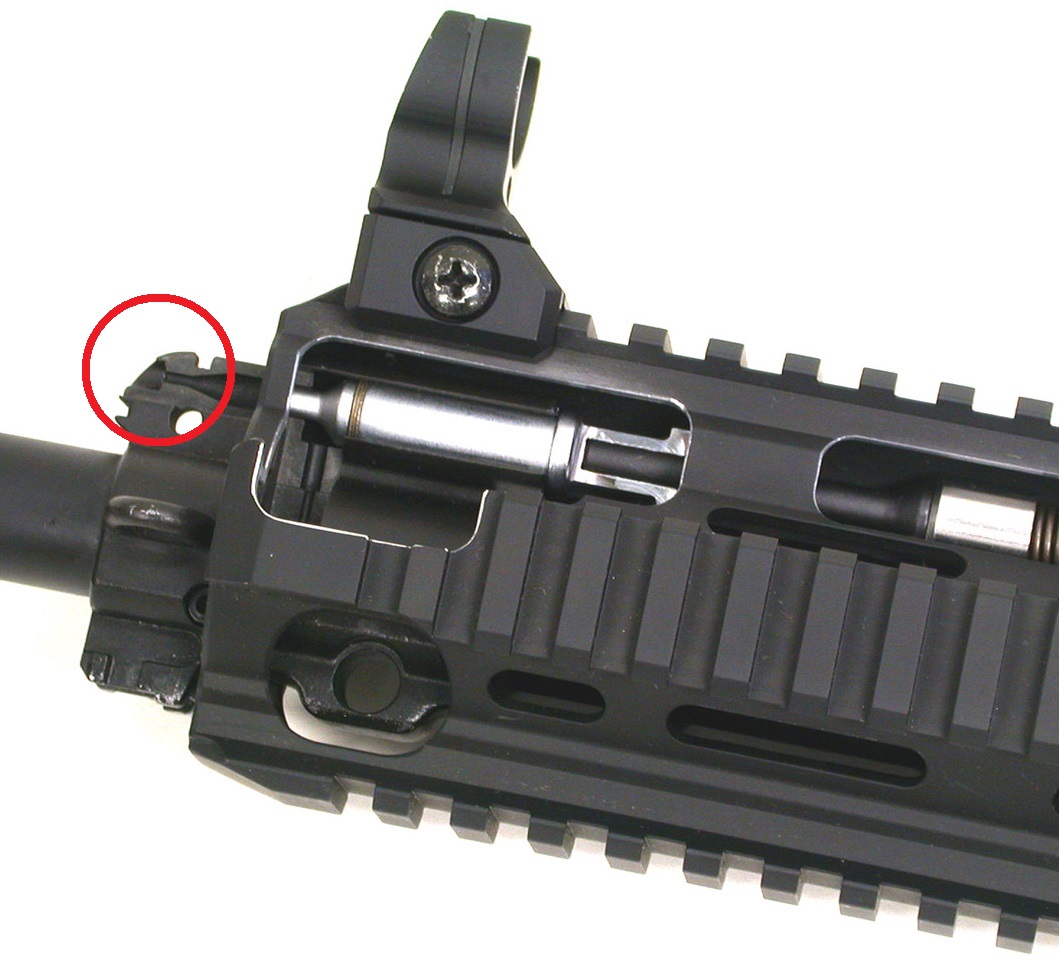
A problem of the HK 416, especially in a time of thermal vision proliferation, is the piston vent port, where high pressure and temperature gasses escape into the atmosphere, towards the threat. This gases are very visible under thermal vision. This problem will be remedied in posterior designs such as the Caracal CAR-816, the Sig 516 and the Sig MCX.
• Except in the first HK 416, it’s possible to put the weapon on safe with the hammer decocked, something which is beginning to be common with some AR-15, but not in milspec ones, in which in order to engage the safety, the hammer has to be cocked.
• At the end of the buffer tube and inside the buttpad, there are three large drainage holes to evacuate water and preventing hydraulic lock of the action. This is another undeniable improvement and a good idea, patented by HK. Said patent is in the centre of the case of HK against Haenel (maker of a candidate for standard issue weapon for the German armed forces) and forced Haenel to modify its design.

• Under the bolt carrier, there is a hole to evacuate water from the firing pin channel and the bolt carrier bore towards the magwell and prevent hydraulic lock, failed primer strikes and other undesirables. It’s a great feature, however not applicable to direct impingement weapons, where this hole would violate the expansion chamber of the gasses between the bolt and the bolt carrier.
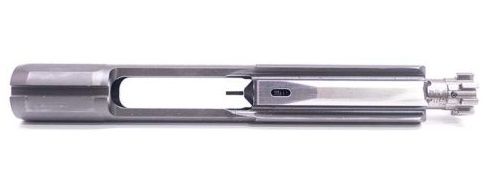
• In the times of the first HK 416, the first gen quad rail handguard was the most solid option and, more importantly, it retained the zero of designators when removing and reassembling the handguard (for example to maintain the piston system). Many other manufacturers have since copied the design.
OTHER OBSERVATIONS ON THE HK 416
In general, it will be noted that many important components are exclusive to HK and not compatible with other platforms. Some components are compatible with AR-15, others with G36. Let’s also remember that there are many versions and gens of HK 416 throughout different years and countries, and this information can vary.
• The Gen 1, steel HK 416 magazines where extremely heavy (and reliable) and they worked with the British SA80. The Gen 2 translucid magazines, somewhat reminiscent of the G36 ones, did not work flawlessly. The Gen 3 is made of polymer and extremely reliable, as well as compatible with any AR-15 or pseudo AR-15 platform. HK was the first magazine manufacturer to add an anti-tilt follower, which improved feeding reliability and was afterwards copied by Magpul, Okay Industries and others.
• The firing pin is HK exclusive, as is the firing pin spring, non existent in milspec AR-15. This spring provides a certain relief to the bolt lugs upon unlocking, something that in regular AR-15 happens naturally thanks to gas pressure coming from the rear.
• The bolt cam pin is exclusive to HK.
• The anodising of the first HK 416 was very deficient, as HK at that time didn’t have enough experience with aluminium.
• The bolt is exclusive to HK.
• The extractor is compatible with AR-15, but with the same type of steel and treatment than the G36 extractor. HK considered this extractor to be superior and would have intended to install it directly in the HK 416 bolt, but they found that the dimensions imposed by the AR-15 “base” didn’t allow it. The HK 416 extractor is cold hammer forged and can be supposed to have and extreme longevity.
• The extractor spring is compatible with the G36. It has a buffer, but not an O-ring. As in any AR-15, if the spring is good (Colt or Sprinco in the case of milspec AR-15) only the buffer or the O-ring is necessary, not both simultaneously.
• The barrel nut (and barrel nut tool) are exclusive to HK. Moreover, the threaded surface of the upper extension is approx 1 cm longer than the AR-15 one, which theoretically provides a tougher and more stable barrel mount –at the expense of weight.
• The charging handle is compatible with AR-15 weapons.
• In the American SOF community, the HK 416 has been used by Delta and only some SEAL units. The M4A1 with SOCOM barrel and made by Daniel Defense/Geissele is still by far the most common weapon in USASOC and the NSW.
• Posterior generations of HK 416 have ambidextrous lowers. In these lowers, the left side magazine catch/release is problematic due to not being adequately fenced, and will often depress when in contact with the body or equipment of the shooter, releasing the magazine. This ergonomic problem, surprising in a platform which has undergone so many revisions and iterations, can be prevented by placing a zip tie in such a way that it blocks the depression of the button. There is also an available 3D printed open source design designed specifically for this, and available in thingiverse.com/thing:4221782
© 2024 Tercio Este & FirstRoundPop

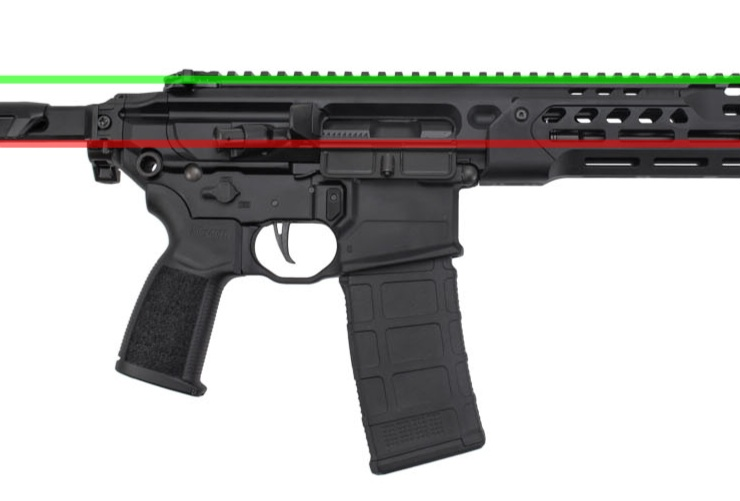
Leave a comment